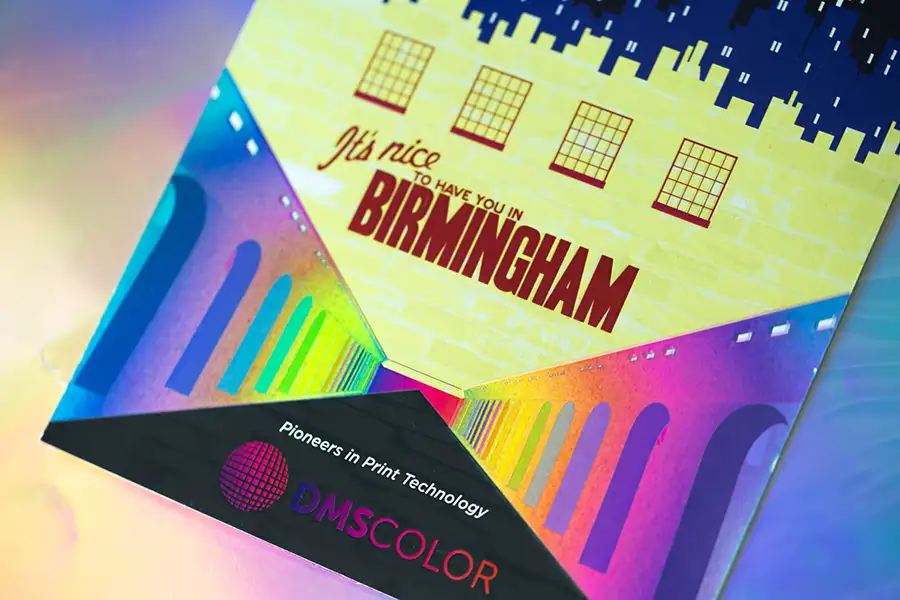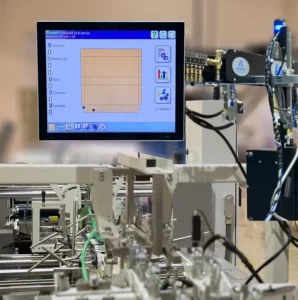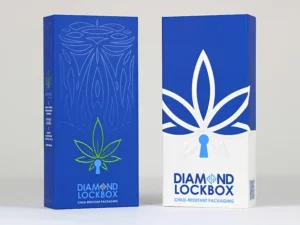
By Erin Judge, writer, PostPress
In a world mired in digital proliferation, brands continue to seek out innovative ways to make a lasting impact with consumers. Instead of digital disruption, many are turning to creative print and finishing techniques to appeal to buyers. Embellishments like foils, embossing and specialty coatings bring value and life to folding cartons, direct mail and other printed pieces, but now brands are demanding these “value adds” with the highest quality and lowest cost amid today’s economic volatility, skilled labor shortage, and demand for sustainable production processes and materials – a challenge for even the most skilled print and finishing providers or folding carton converters. PostPress assembled a panel of industry experts to shed light on where they see the greatest opportunities for finishing and embellishing in the next year and how best to navigate the challenges that lie ahead.
Metallics

“Great packaging sells products and inspires trust,” said Kary Radestock, CEO of Hippo Packaging, a cannabis branding and packaging agency. It’s why many in consumer-packaged goods (CPGs) continue to choose embellishments like foils, embossing and specialty coatings to elevate their brands amongst their competitors on the shelf.
“During that first moment of truth (FMOT), embellishments immediately can increase the value proposition of their products,” said Dennis Bacchetta, director of marketing at Diamond Packaging, a WBENC-certified company specializing in sustainable folding cartons. “Foil adds texture and dimension to a printed piece or folding carton and reinforces its premium positioning.”
The hot foil stamping market size is expected to grow by $77.96 million from 2022 to 2027. 1 As brands push for creativity and differentiation, equipment suppliers continue to innovate both in terms of equipment and the ancillary items needed for production (tooling, foil types, varnish types, etc.)
According to Chris Raney, vice president of postpress and packaging for Heidelberg USA, “Finishing companies should work with the best suppliers to constantly push the boundaries of new products and techniques.” He added that where higher embellishments are used, absolute production speed is less important than the quality of the machine, tooling and materials used.
Digital embellishments
For brand owners without the long runs to justify the tooling costs for foil stamping or embossing, digital embellishments are becoming increasingly popular. According to Matt Greer, CEO of DMS Color and an expert in digital print technologies, “As the market has become educated on the proper set-up and how digital foil is best utilized, it is clear we are out of the early adoption phase. The ‘bang for your buck’ for shorter runs is driving a lot of adoption.”

Digital embellishments can add the same feeling of luxury to a brand as traditional embellishments but at a more approachable price point (dependent on run length) and with the ability to create variable, personalized foils or finishes. “Digital foils and coatings offer a unique combination of aesthetics and practicality that traditional methods struggle to match,” said Kevin Abergel, CEO of Taktiful, a consulting company specializing in print embellishments.
Growth opportunities for digital embellishment virtually are limitless as markets begin to embrace this relatively new technology. Abergel and Greer noted that digital embellishments can be used anywhere conventional foils and coatings are used – like folding cartons and greeting cards – but are more flexible for companies seeking smaller quantities. Additional opportunities lie in markets where personalization is important and can create higher engagement rates and lasting impact, including wedding and event stationery, direct mail and marketing collateral, and corporate collateral like business cards or annual reports. Digital embellishments also can be incorporated into special-edition games or publications to increase their perceived value and appeal to collectors or enthusiasts.
Still a growing market, digital embellishments do pose current challenges like higher cost implications for longer runs and technical limitations due to substrates and inks and coatings. Abergel added, “While the future of digital embellishments is promising, success depends on thoughtful application, ongoing innovation and a commitment to balancing aesthetic appeal with practical and environmental considerations.”
Opportunities in cannabis
The cannabis market has undergone some difficult economic times over the past two and a half years, but new future regulatory shifts will help boost the industry. “Even during hard times, our customers always have prioritized their packaging,” Radestock said. “As we see the industry begin to grow again, embellishments like metallics are likely to be revived as brands look to regain market share and capture client loyalty.” According to Statista, cannabis revenue is expected to show an annual growth rate (CAGR 2023-2028) of 14.66%, resulting in a market volume of $67.15B by 2028. Bacchetta sees the use of metallics and other embellishments in cannabis packaging to continue to grow as the market evolves and more retail dispensaries open throughout the US. He noted, “Today, more and more cannabis brands design packaging luxurious enough to rival that of high-end cosmetic brands.”
In regions without access to full-fledged cannabis, Radestock said hemp and CBD products currently are popular with consumers. “Those brand-owners are duking it out at retail and decorating every packaging surface that will pack a punch.”
Sustainability

While brands seek to differentiate themselves through specialized finishing, a growing number are requesting that the production processes and materials used are sustainable. According to Bacchetta, “The challenge is how to produce environmentally friendly packaging that also beckons from the shelf.” For Diamond Packaging, a Zero Waste to Landfill and Carbon Neutral (Scope 1 and 2) facility, the company has adopted inline finishing processes that result in less energy usage and less material waste in comparison to offline processes. Additionally, Diamond’s packaging is produced using recyclable or recycled paperboards (many FSC certified) and manufactured with 100% renewable wind energy.
The Foil & Specialty Effects Association (FSEA) looked deeper into the recyclability factors of materials when a metallic foil is added. In a study conducted in partnership with Georgia Tech’s Renewable Bioproducts Institute, paper stock that includes metallic transfer foil could be repulped to yield 75% fibers with low rejects. Additionally, the study found that it is feasible to repulp the metallic foil decorated papers as it is done in common recycling settings. Additional information about the study can be found at www.fsea.com.
Another trend in the marketplace is companies moving to modern finishing and converting equipment that run much more efficiently than older manual machines. According to Raney, “Today’s machines allow for automated makereadies, which reduce set-up time and shorten production time per job.” Jeff Bates, national sales manager for W. H. Leary, added “Finishing plants can streamline processes and automate production processes with software settings and hardware components, which can improve quality production and remove any human error.” He added that companies that set benchmarks for quality are better able to minimize carton and material waste.
For digital embellishments, sustainability considerations still are being explored. Aberegal said, “There might be scrutiny on the environmental impact of digital embellishments, especially if they make recycling more complicated or use materials that are not environmentally friendly, like plastic lamination or UV-based products. Overcoming these challenges will require constant innovation.”
Overcoming economic and labor challenges
Outside of brand demands, additional factors like today’s difficult economic environment and the skilled labor shortage will continue to create challenges into 2024. The increased automation of modern finishing equipment not only helps with the sustainability aspects of production but also from an economic standpoint. As material costs continue to rise, both brands and manufacturers are seeking ways to save money. According to Bates, “The adoption of automation technology has revolutionized the landscape of folding carton manufacturing plants. This shift not only optimizes the manufacturing process but also minimizes costly errors and material wastage, resulting in both economic and environmental benefits.”
Many brands may choose to completely eliminate finishing embellishments on pieces to save money due to their own rising costs. Radestock said, “Economic pressures will continue to challenge the necessity of the decorating.” She advises developing and sharing case studies and white papers to educate brands about the value and shelf impact of decorated packaging, proving that embellishing improves ROI and, ultimately, the bottom line.
To achieve the high-end embellishments that many brands are seeking, operator skill level must be high. This proves challenging in today’s environment as the level of skilled workers continues to dwindle and attracting new and younger talent is difficult. Raney said, “The biggest challenge that every finisher and carton manufacturer will face in the coming years is operator skill level and the cost and reliability of these personnel.” He advises that creating a good work environment that is safe and appealing (clean and climate controlled), competitive salaries and investing in employees through training will be vital to employee retention. Additionally, modern equipment that is automated and well-maintained will reduce the labor required to run machines while maintaining throughput levels.
Brands’ needs for differentiation through finishing and embellishment will continue to drive innovation and creativity from all parts of the industry. Finding cost-effective, efficient ways of creating and maintaining quality products will be key in 2024.
References
- Technavio Research, “Hot Stamping Foils Market by Product, End-user, and Geography – Forecast and Analysis 2023-2027,” 2023.

